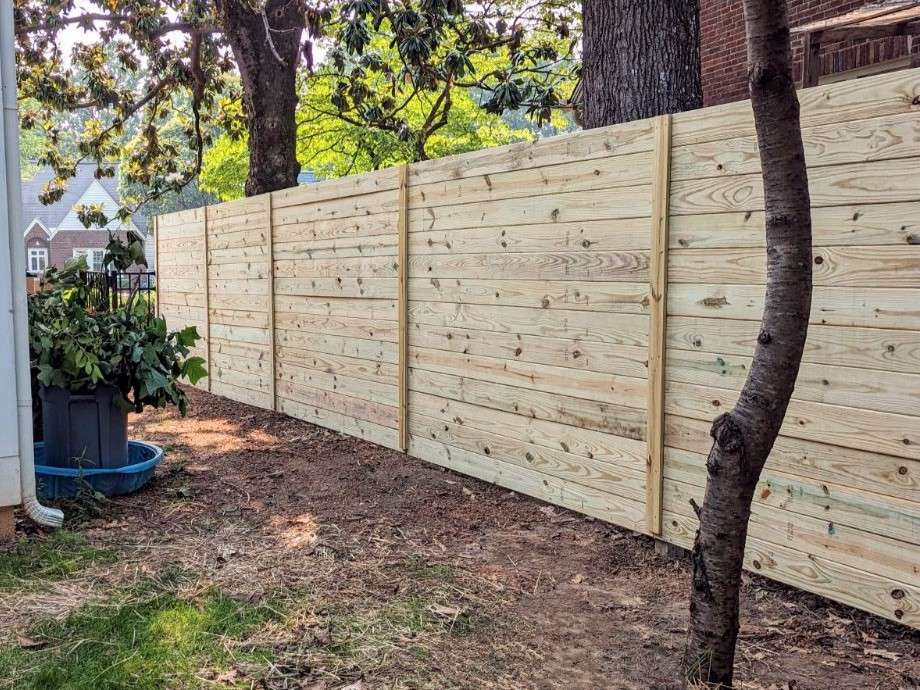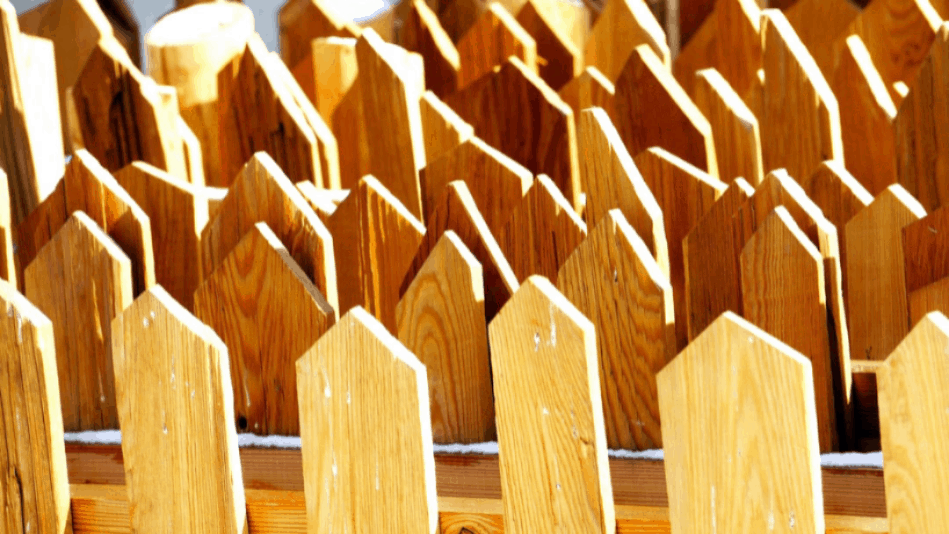All Categories
Featured
While a tall fencing might appear like the ideal choice, the ideal elevation depends on several variables, consisting of security needs, local guidelines, and the materials made use of. Listed below, we'll detail essential factors to consider to help you pick the ideal fencing height for ideal safety and security.
![]()
If you stay in an area controlled by a homeowners' organization (HOA), you ought to additionally evaluate any type of details guidelines they have for fence elevation, style, and products. Sticking to these guidelines guarantees you avoid legal concerns and maintain an excellent connection with your next-door neighbors.
Taller fences are harder to scale and can dramatically reduce the chance of burglaries. Including attributes like sharp tops, barbed cord, or perhaps electrical fence can further raise the obstacle's protection. A fencing that reaches 8 feet or greater is often reliable at protecting against most individuals from easily leaping over it.
![]()
Wooden Fencings: While wooden fences give personal privacy, they can be simple to climb, specifically if there are no anti-climb features. For maximum safety, think about a wood fence that's 6 to 8 feet tall with sharp tops or trellis extensions that make it more challenging to scale. Chain-Link Fences: Chain-link fences are typically much more long lasting and budget friendly than wood, and they can be developed to the necessary elevation for security. To enhance deterrence, take into consideration including barbed or razor cable ahead. These features inhibit climbing up and make the fence much more difficult to violation. Wrought Iron Fences: Wrought iron fencings are typically made use of for high-security purposes due to their stamina and sturdiness. Their vertical bars make it difficult to climb up, and they can be constructed to 6 to 8 feet high with additional spikes or attractive anti-climb attributes to further secure the boundary. Plastic Fencings: Plastic is an exceptional option if you require a solid, private fencing, yet like timber, vinyl fencings may require extra elevation or security attributes to prevent climbing up. Select a fencing that goes to least 6 feet high to make certain personal privacy and security. Each product provides different advantages in regards to aesthetics, toughness, and maintenance, so it is essential to consider your details requirements and preferences when choosing a fence.
Anti-Climb Attributes: Mounting pointed or sharp tops, trellis expansions, or safety and security spikes at the top of the fencing makes it harder for any person to scale the fencing. These functions function as a solid deterrent to potential trespassers. Barbed or Razor Cord: Including barbed cord or razor cord on top of your fencing raises safety dramatically. This is commonly used in high-security locations, such as industrial homes, yet can likewise be a good alternative for residential homes in risky locations. Electric Fence: For top-level security, you might intend to consider adding an electrical fencing to your residential property. Electric fence, when set up effectively, can create a solid deterrent while continuing to be reasonably very discreet. It provides a moderate shock to anybody who attempts to touch or climb up the fence. Incorporating height with these extra attributes guarantees that your fencing offers the highest level of safety and security.
Balancing the need for privacy and safety while keeping the aesthetic charm of your property can assist you select the ideal elevation and product for your fence. Make sure that your fence enhances the general design of your home and doesn't adversely impact the visual charm.
![]()
By thoroughly thinking about all these elements, you can create a protected, exclusive, and attractive limit around your building that uses both peace of mind and defense.

- Understand Citizen Regulations and Zoning Regulations. The very first step in picking your fence height is to familiarize on your own with neighborhood guidelines. Commonly, front backyard fences are limited to 3 to 4 feet, while yard fences can be as tall as 6 to 8 feet or even more.
If you stay in an area controlled by a homeowners' organization (HOA), you ought to additionally evaluate any type of details guidelines they have for fence elevation, style, and products. Sticking to these guidelines guarantees you avoid legal concerns and maintain an excellent connection with your next-door neighbors.
- Determine the Preferred Level of Safety. The level of security you need is a major variable in establishing the suitable fence elevation. If you're looking to prevent casual trespassers or maintain youngsters and family pets inside the backyard, a fencing in between 4 to 6 feet may be adequate. However, for greater security requirements-- such as protecting versus robbers or guaranteeing security in high-crime areas-- you may require a taller fence. A fence elevation of 6 to 8 feet is normally recommended for optimum security.
Taller fences are harder to scale and can dramatically reduce the chance of burglaries. Including attributes like sharp tops, barbed cord, or perhaps electrical fence can further raise the obstacle's protection. A fencing that reaches 8 feet or greater is often reliable at protecting against most individuals from easily leaping over it.
- Pick the Right Material for Your Fencing. The material of your fence plays an essential function in its capability to offer security. While taller fences are much better for security, the kind of material you utilize can improve or prevent the performance of the height. Right here are some prominent fence products for security:

Wooden Fencings: While wooden fences give personal privacy, they can be simple to climb, specifically if there are no anti-climb features. For maximum safety, think about a wood fence that's 6 to 8 feet tall with sharp tops or trellis extensions that make it more challenging to scale. Chain-Link Fences: Chain-link fences are typically much more long lasting and budget friendly than wood, and they can be developed to the necessary elevation for security. To enhance deterrence, take into consideration including barbed or razor cable ahead. These features inhibit climbing up and make the fence much more difficult to violation. Wrought Iron Fences: Wrought iron fencings are typically made use of for high-security purposes due to their stamina and sturdiness. Their vertical bars make it difficult to climb up, and they can be constructed to 6 to 8 feet high with additional spikes or attractive anti-climb attributes to further secure the boundary. Plastic Fencings: Plastic is an exceptional option if you require a solid, private fencing, yet like timber, vinyl fencings may require extra elevation or security attributes to prevent climbing up. Select a fencing that goes to least 6 feet high to make certain personal privacy and security. Each product provides different advantages in regards to aesthetics, toughness, and maintenance, so it is essential to consider your details requirements and preferences when choosing a fence.
- Include Safety And Security Features for Extra Protection. While elevation is essential, adding extra protection attributes to your fence can raise its performance. Think about the following enhancements:
Anti-Climb Attributes: Mounting pointed or sharp tops, trellis expansions, or safety and security spikes at the top of the fencing makes it harder for any person to scale the fencing. These functions function as a solid deterrent to potential trespassers. Barbed or Razor Cord: Including barbed cord or razor cord on top of your fencing raises safety dramatically. This is commonly used in high-security locations, such as industrial homes, yet can likewise be a good alternative for residential homes in risky locations. Electric Fence: For top-level security, you might intend to consider adding an electrical fencing to your residential property. Electric fence, when set up effectively, can create a solid deterrent while continuing to be reasonably very discreet. It provides a moderate shock to anybody who attempts to touch or climb up the fence. Incorporating height with these extra attributes guarantees that your fencing offers the highest level of safety and security.
- Think About Personal Privacy and Aesthetic Preferences. While safety and security ought to be your key concern, it's also vital to consider the visual charm of your fence. High fencings might supply security, yet they can occasionally appear enforcing or hostile. If personal privacy is a problem, a solid timber or plastic fencing can supply both safety and security and privacy, while a functioned iron fence supplies safety with an open sight.
Balancing the need for privacy and safety while keeping the aesthetic charm of your property can assist you select the ideal elevation and product for your fence. Make sure that your fence enhances the general design of your home and doesn't adversely impact the visual charm.

- Last Ideas on Fence Height and Safety And Security. Picking the right fence elevation for optimal security includes balancing a number of factors, including neighborhood regulations, the degree of safety required, the product of the fence, and additional security functions. In general, a fencing elevation of 6 to 8 feet is suitable for many household homes, with taller fences giving an included layer of security for risky locations. Combining the best height with a sturdy, climb-resistant product and additional protection functions will certainly aid ensure that your fence effectively safeguards your property. Always check regional codes and consider your personal privacy and aesthetic choices when making your decision.
By thoroughly thinking about all these elements, you can create a protected, exclusive, and attractive limit around your building that uses both peace of mind and defense.
Latest Posts
Safeguard Your Home with High Quality Residential Roof
Published May 25, 25
1 min read
Why Consistent Vehicle Maintenance at Montclare Auto Repair Saves You Money
Published May 25, 25
1 min read
Boost Your Building with Expenses Door Systems
Published May 22, 25
1 min read